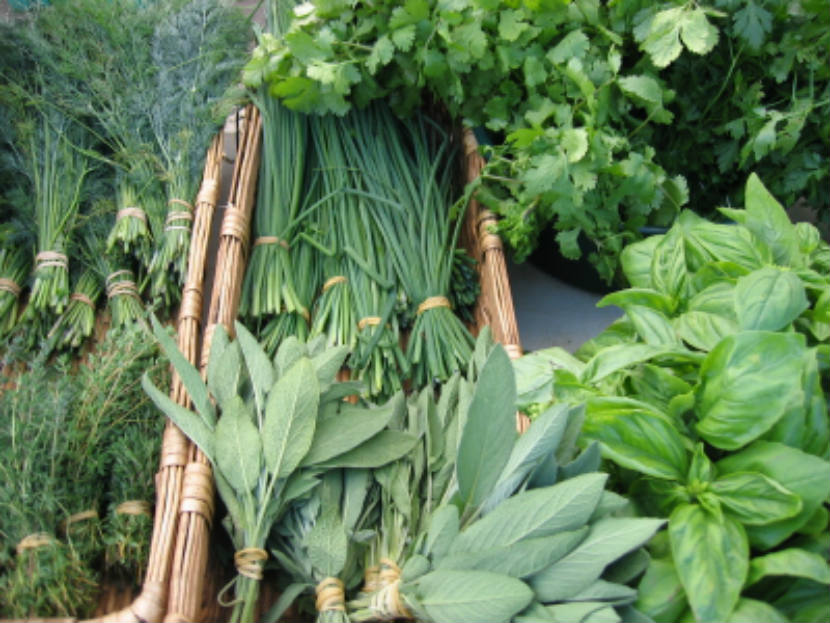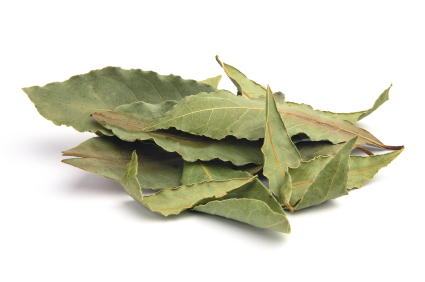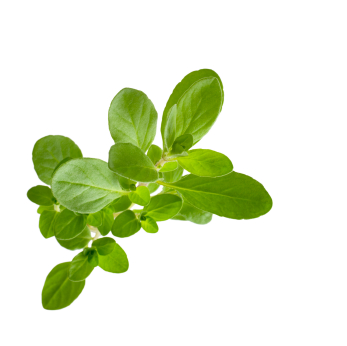
Are you looking for ways to add a lot of flavour to your foods without a lot of salt? Add fresh or dried herbs to your recipes instead! It’s also a low fat way of adding great flavour. Whether fresh or dried, adding herbs is an easy way to increase the aroma and flavour of any dish! Look out for these varieties next time you go grocery shopping.
What is an herb?
Herbs are the leafy parts of plants that do not have woody stems. They can be fresh or dried. Dried herbs have a stronger flavour than fresh but lose their strength quickly.
How is a spice different from an herb?
Spices come from the bark, buds fruit, roots, seeds or stems of various plants or trees.
Here are some common cooking herbs you can find in many kitchens
 Basil
Basil
Basil comes in many varieties. This is a strongly flavoured herb that tastes like a combination of licorice and cloves. Basil can be used in many dishes, including pasta sauces and pesto. Fresh basil has more flavour then dried. It is popular in Mediterranean cooking. Tomatoes and basil go great together as in this Tomato Salad and Basil Vinaigrette.
 Bay leaf
Bay leaf
Bay leaf provides a ‘woodsy’ flavour to sauces, stews, vegetables and grilled meats. Dried bay leaves can be commonly found in supermarkets and are less expensive than fresh. Add bay leaves early in the cooking process to draw out their flavour. Remove before serving. Add a bay leaf to this Curried Cream of Parsnip and Carrot Soup.
 Cilantro
Cilantro
Cilantro or coriander has a strong fragrance that is sometimes described as “soapy”. It goes well with spicy foods. Cilantro is used in salsas, stir-fries, like this Sweet Chili Tofu Stir-Fry, and curries. Cilantro does not cook well and should be added right before serving for best flavour. Coriander seeds are the dried fruit of the plant and are used a lot in Asian cooking.
 Dill
Dill
Dill has a light, distinctive flavour that is used in salads, fish, egg, vegetables and meat dishes, sauces and dressings. Add dill at the end of cooking because it loses its flavour when heated. Use fresh dill when you can since dry dill has little flavour. Dill seed has a stronger flavour than the leaves, and should be used early in cooking so the heat can bring out the flavour. Add dill to Mustard Beet and Apple Salad.
 Lemongrass
Lemongrass
Lemongrass has a sour-lemon flavour and fragrance. It is usually used to flavour teas and soups and is often found in Thai and Vietnamese cooking. To use lemongrass, cut off the top and bottom, remove the outer layers and the white base. Cut it in large pieces to remove it easily after a dish is cooked. Dried lemongrass is not a good substitute for fresh. Try it in Khao Tom.
 Marjoram
Marjoram
Marjoram is similar to oregano but is sweeter and milder. Marjoram goes well with meats such as pork, lamb and veal. Its flavour is best when added near the end of the cooking process. Try adding marjoram to this Ontario Winter Vegetable Soup.
 Oregano
Oregano
Oregano is also called wild marjoram because of its stronger, more pungent flavour and aroma. Dried oregano is a good substitute for fresh. Oregano goes well in tomato-based dishes, including pizza sauces, and meats. It also works well with the flavours of most vegetables. Try it in Mediterranean Zucchini and Eggplant.
 Parsley
Parsley
Parsley is a slightly peppery, fresh-flavoured herb used to season many different dishes, and is often used as a garnish. Look for flat leaf or Italian parsley, which provides more flavour than curly parsley. Dried parsley does not have the same intense flavour, so use fresh whenever possible. Parsley can also be a key ingredient in salads such as in this Chicken Bulgur Salad.
 Rosemary
Rosemary
Rosemary has a strong flavour that tastes a little like lemon and pine. Rosemary leaves are often used with meats, tomato sauces, potatoes, soups, vegetables, fish and dressing. Both fresh and dried provide a strong flavour and aroma. Try it with this Pork Tenderloin with Cider Glazed Carrots.
 Sage
Sage
Sage is a strong herb that is slightly bitter and has a musty mint taste and aroma. It’s often used in Mediterranean cooking. Sage is often combined with other strong herbs, and used to flavour pork, beef, poultry stuffing, and sausage. Dried sage can be used as good substitute for fresh, but only small amounts are needed because of its strong flavour.
 Thyme
Thyme
Thyme is used to flavour soups and stews, sauces, vegetables, meat, poultry and fish dishes and is often used in combination with other herbs like rosemary, parsley and oregano. It’s often used in French cooking. Because of its intense flavour, use in small amounts. Try it with this Minestrone Soup.
Buy and store herbs properly to maintain their freshness
Look for herbs that are bright, even in colour and not wilting. Store them with stems down in a tall glass of water and loosely cover with a plastic bag and refrigerate for 4 to 6 days. Woodier fresh herbs – like rosemary and thyme – should be wrapped in a damp paper towel in a plastic bag and stored in the refrigerator.
Dried herbs are best stored in airtight containers in a cool, dark place for up to six months. Replace old herbs regularly for maximum flavour.
You usually can substitute 1 tbsp of fresh herbs for 1 tsp of dried herbs, but always check the recipe for substitution instructions.
Time your use of herbs when cooking
Use whole herbs at the beginning of cooking – like bay leaves - because it takes longer to draw out the flavour when they are whole. When chopped, the cells of the herb leaves are broken open, which lets out the aroma. Chopped herbs are best used before serving.
Dried herbs need time to rehydrate and should be added early to allow heat to release their flavours. Crush dried herbs between your fingers before adding to a dish to help release their flavour.
Bottom line
Fresh and dried herbs can add new flavours and aromas to your cooking without added fat, sodium or calories. Experiment with the different herbs to see what you like best.
You may also be interested in:
How to cook with spices
Growing an indoor herb garden
Get the Scoop on Salt
Last Update – June 13, 2018